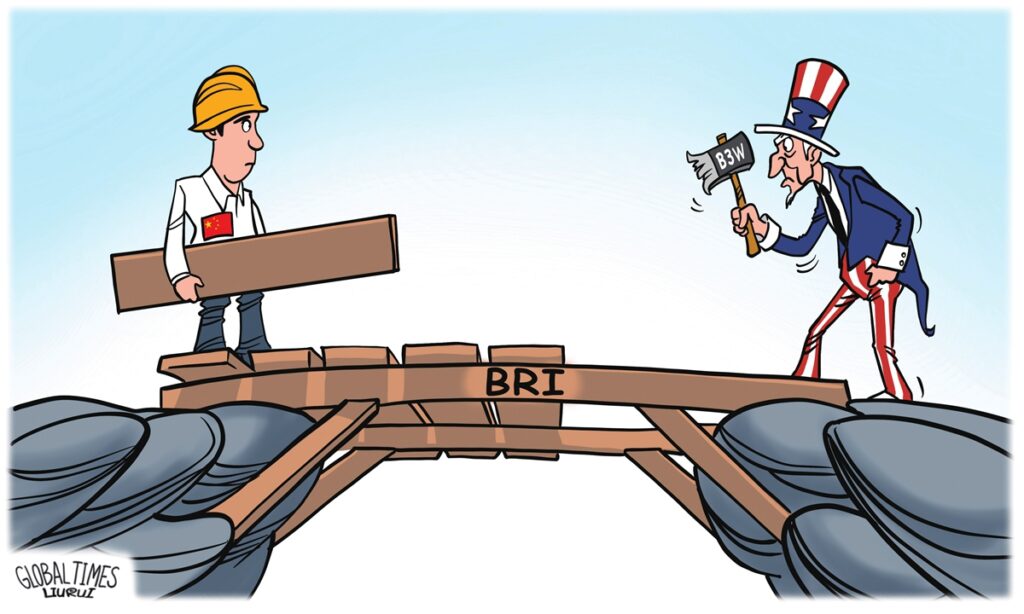Through the Belt and Road Initiative (BRI), China has demonstrated a willingness to share its development dividends by actively engaging in practical cooperation and investing in Southeast Asia’s infrastructure construction. This policy has provided tangible development opportunities for Southeast Asian countries and laid a solid foundation for long-term cooperation between China and Southeast Asian nations.
More importantly, a comparison between China and the US in infrastructure support to Southeast Asia underscores which country is a more reliable partner in regional infrastructure development and which is motivated by geopolitical interests to cause disruptions.
Cambodia on Monday broke ground on the $1.7 billion Funan Techo Canal that will link the capital Phnom Penh to a deep-water port in Preah Sihanouk province, the Xinhua News Agency reported.
The canal represents a significant infrastructure project in Cambodia, which is expected to improve regional connectivity and boost regional economic integration.
However, some US media outlets have been playing up concerns about the project. CNN reported on Monday that there are worries about the project’s potential impact on regional water management and agricultural production. Although the Cambodian government has dismissed these concerns, such hype actually reveals Washington’s reluctance to see the start of another high-profile BRI project in Southeast Asia.
Indeed, the groundbreaking for the Funan Techo Canal project could be the latest milestone in the development of the BRI in Southeast Asia. It was during the Belt and Road Forum in Beijing last year that Cambodia signed an investment framework agreement with China Bridge and Road Corp on the construction of the canal.
In recent years, China and Southeast Asian countries have carried out infrastructure projects under the BRI, such as the China-Laos Railway, the Jakarta-Bandung high-speed railway, the China-Thailand railway and Malaysia’s East Coast Rail Link.
These projects reflect China’s determination and ability in promoting regional infrastructure construction, as well as the positive attitude and support of Southeast Asian countries toward enhancing regional connectivity and achieving common prosperity.
By comparison, Washington, in a bid to counter the BRI’s influence, has proposed projects such as the Blue Dot Network, aiming to establish a high-standard infrastructure investment framework. However, these projects often lack sufficient funding and execution capability, making it difficult to generate any substantial result in the short term.
Washington sometimes makes statements or takes actions that could make some countries delusional about receiving potential infrastructure support from the US. But given the progress of its domestic and overseas infrastructure projects, the US may simply not have the capability or willingness to undertake large-scale infrastructure projects in Southeast Asia.
On the one hand, a US-backed infrastructure investment project may face many challenges in implementation, including political changes, funding shortages and execution difficulties, limiting its ability to undertake and promote large-scale infrastructure projects in Southeast Asia.
On the other hand, the latest figures have stoked anxiety that the US economy may face more trouble than expected. It appears to be vulnerable to a recession and the Fed may need to cut rates faster than expected. Such economic conditions will further weaken its infrastructure investment capability overseas, especially in Asia.
More importantly, it is no secret that the US is actually more concerned with geopolitical considerations in this region rather than purely promoting local economic development, which is the fundamental reason why it is difficult for the US to form a sustainable infrastructure cooperation framework comparable to the BRI.
Fortunately, Southeast Asian countries are realistic about which country is the really reliable infrastructure partner. With the advancement of more connectivity projects in the region, it is expected that China’s collaboration with Southeast Asia will strengthen, promoting regional development and furthering trade and investment liberalization and facilitation.
GT




